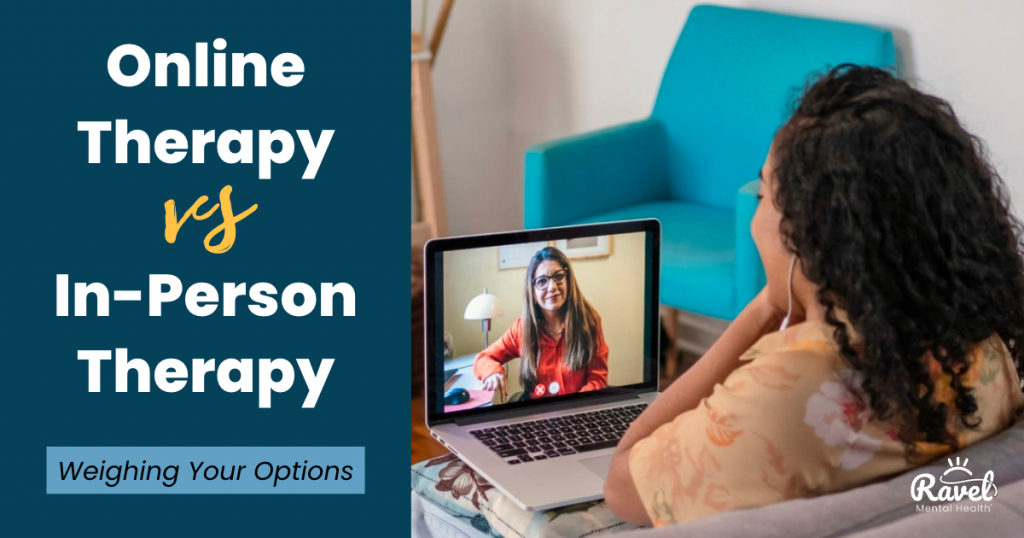Therapy has always been a valuable tool for people struggling with mental health issues for many years. However, it wasn’t until recently- even just the last 3-4 years during the pandemic did the option of online therapy (aka teletherapy) become more widely available and explode in popularity.
With the convenience and accessibility of online therapy becoming more widely known, many people are weighing the costs and benefits of online therapy compared to in-person attendance. Here’s some additional food for thought when trying to make an informed decision.
Cost of Online Therapy vs In-Person Therapy
One of the biggest factors to consider when deciding between online therapy and in-person therapy is cost. In general, online therapy tends to be more affordable than in-person therapy or at the very least, right in line with it. This is due to a variety of factors, including lower overhead costs for therapists who work online and the ability to see more clients per day. Additionally, some insurance providers offer coverage for online therapy, making it even more accessible for those who need it.
There are other money-saving factors for going online like, saving money on transit, childcare, fuel, and your valuable time.
Flexibility of Online Therapy vs. In-Person Therapy
Another important factor to consider is the flexibility of online therapy. By simply logging in online it allows for greater flexibility in scheduling appointments and eliminates the need for travel time to and from therapy sessions. This can be especially beneficial for individuals with busy schedules, anxiety surrounding leaving home, or even mobility issues.
However, in-person therapy offers the benefit of face-to-face interaction with a therapist, which can be more conducive to building a strong therapeutic relationship. It can also be easier to pick up on nonverbal cues and body language during in-person sessions, which can provide additional insights into a client’s emotional state.
Other factors to consider
When deciding between online therapy and in-person therapy, there are a few other factors to consider as well. For example, some individuals may feel more comfortable and at ease in a familiar environment, like their own home, which is simple to set up and prepare for. On the other hand, some may find it more difficult to open up and be vulnerable when only appearing on screen or over the phone.
Another important factor to consider is the type of therapy being sought. Certain types of therapy, such as cognitive-behavioral therapy, can be just as effective online as they are in person. However, other types of therapy, such as art therapy or play therapy, probably will not be as effective in an online setting and definitely has more challenges in preparation and limited scope of possibilities.
Making a Decision
When it comes to choosing between online therapy and in-person therapy, there is no one-size-fits-all answer. It ultimately comes down to personal preference, cost, and the type of therapy being sought. It’s important to weigh the pros and cons of each option and consider which will be the most effective and accessible for you.
Overall, online therapy can be a more affordable and flexible option than in-person therapy, but it may not be the best choice or most effective route for everyone. It’s important to consider the cost, flexibility, and other factors when deciding which type of therapy to pursue. By weighing your options and making an informed decision, you can receive the support and help you need to improve your mental health and well-being.
Here at Ravel, we strive to offer a variety of therapy options so you can find what will suit you best. Browse our directory today and see what’s available in your area OR through your screen!
